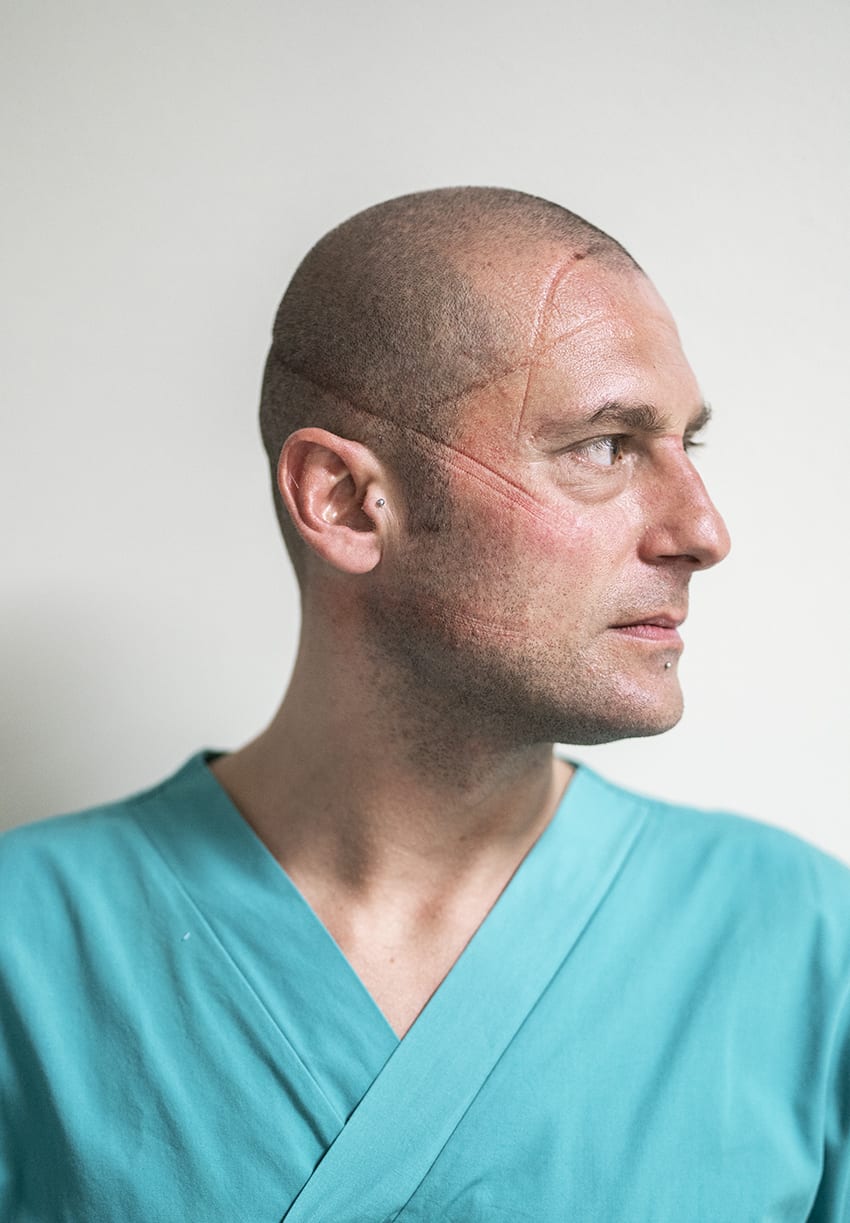In Pesaro, Italy, the San Salvatore hospital is overwhelmed by those suffering from Covid-19. Alberto Giuliani captured the experiences of doctors and nurses as manifested upon their skin.
A disconcerting silence pervades San Salvatore hospital in Pesaro, Italy. The deserted lower floor sits below two temporary critical care units heaving with those suffering from COVID-19, and in the garden, a statue of Saint Padre Pio, once enveloped by flowers left by friends and relatives, stands empty.
“There was not one flower, not one sign, nothing,” recounts Alberto Giuliani who grew up in Pesaro — a coastal city in the Italian region of Marche, which borders the Adriatic sea. The photographer returned to the metropolis from his previous home Milan in September 2019, and, following the outbreak of COVID-19, gained access to photograph inside the central hospital, which has been dedicated to treating those with coronavirus ever since.
“The wards were silent and without natural light,” continues Giuliani, who would arrive at 5:30 in the morning, and leave around 11 pm, shadowing a doctor during the day and departing at night — “the evening shift was heavy,” he says.

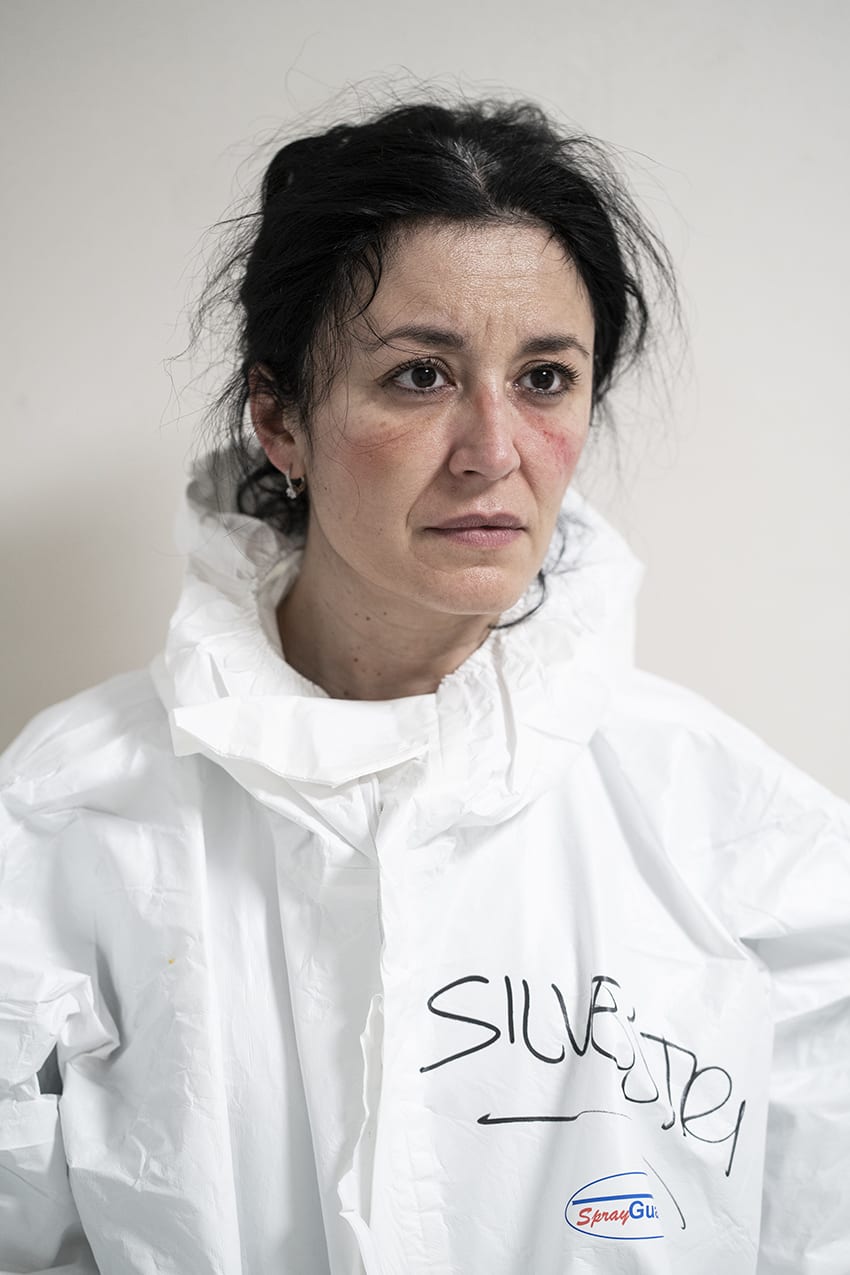
“The hospital was full of people but it was empty. Empty of sound, empty of ideas, just emptiness — the emptiness of everything”
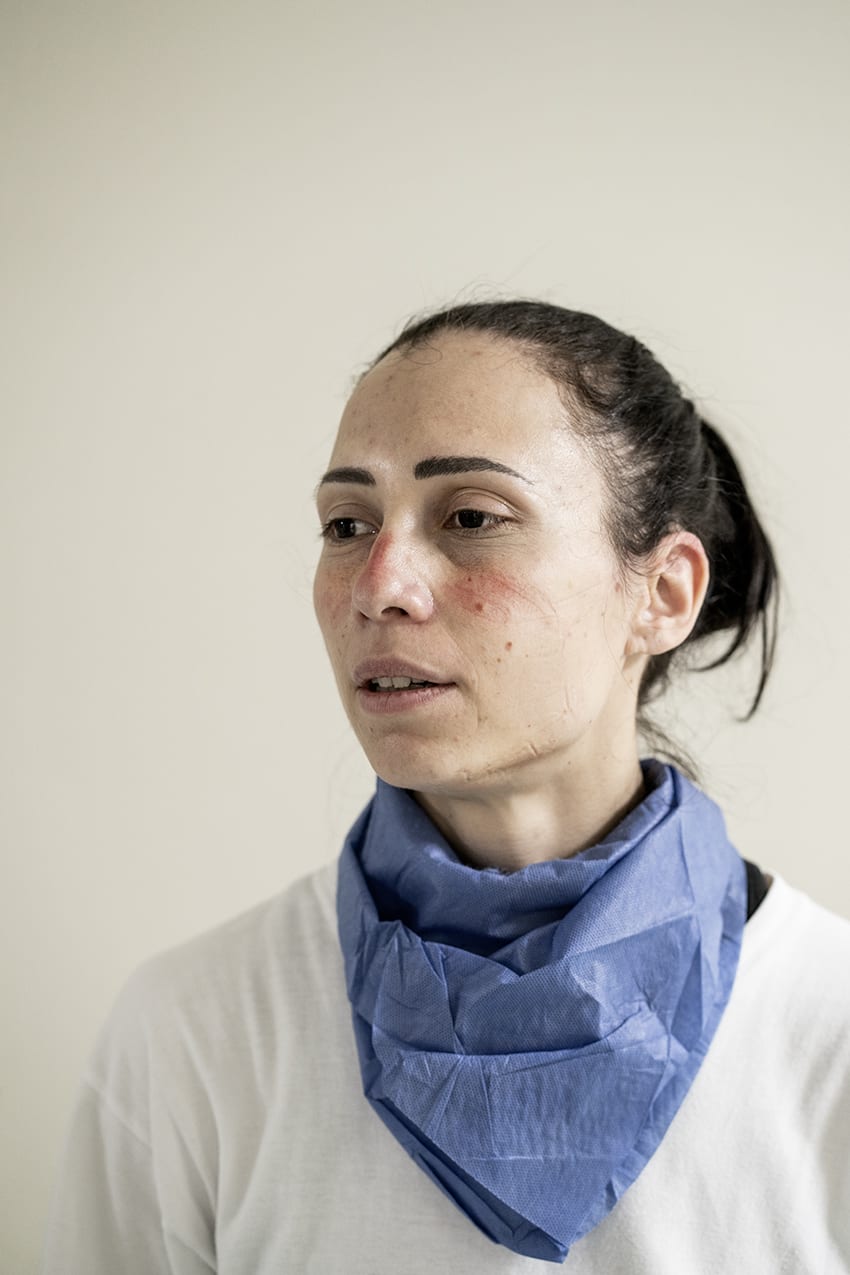
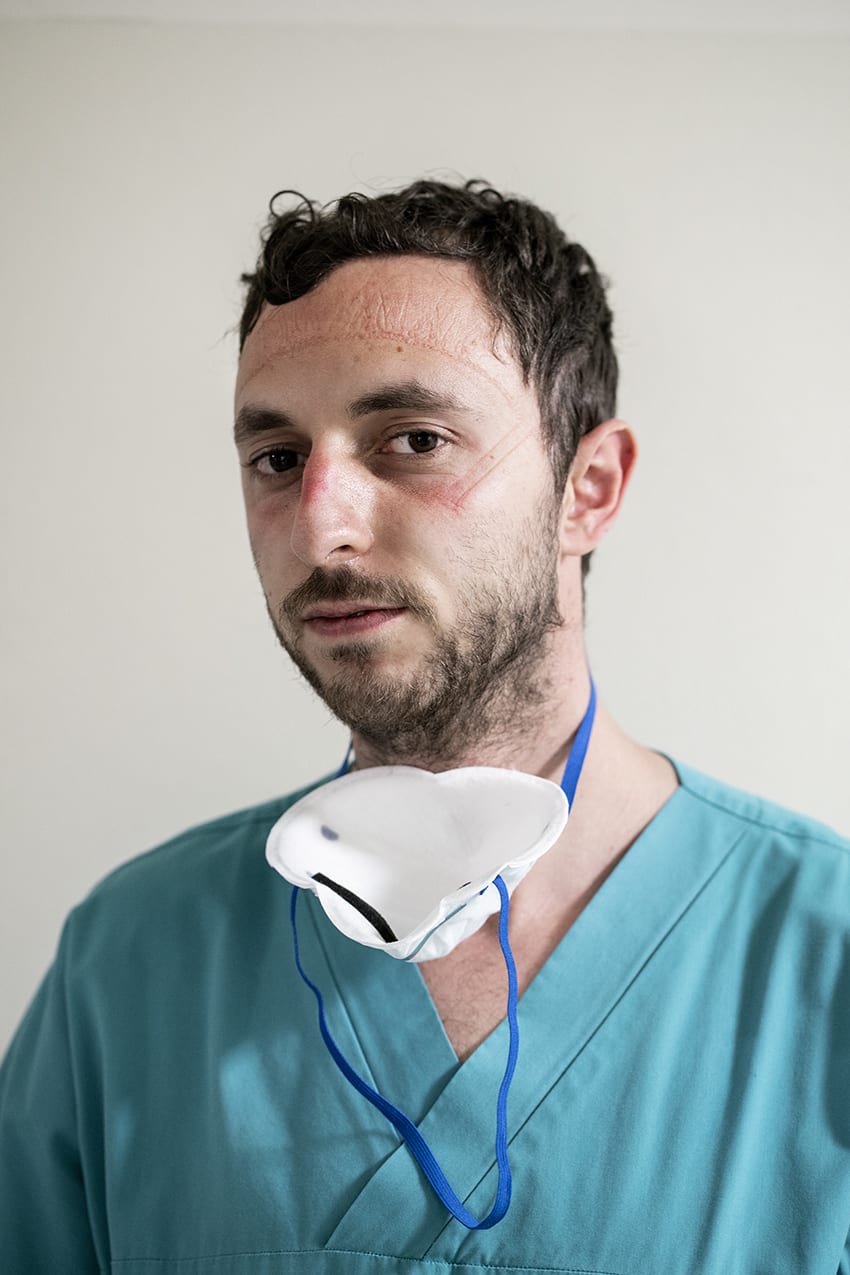
The helplessness that consumed the medics was, however, what disturbed Giuliani most — the exhaustion and powerlessness of being unable to effectively treat an illness ravaging their home. “The hospital was full of people but it was empty. Empty of sound, empty of ideas, just emptiness — the emptiness of everything,” Giuliani says, describing how staff began to refer to deceased patients by the year of their birth — to endure and somehow process what was taking place. “I do not know if it is still like that,” he continues, “but, at the time, it seemed that they were searching for a way to distance themselves from the death.”
And, it is that overwhelming helplessness — of exhaustion, of vulnerability, of demoralisation — which pervades Giuliani’s stark portraits of doctors and nurses, which he took at the end of their shifts. “When you leave the ICU after 12 hours you have forgotten what exists outside,” says Giuliani. “At that moment, the individuals depicted were totally abandoned to me — they were so tired — they did not understand what was going on.”
“If you cannot see what object generates the sign, then the sign says more about the invisibility of the threat”
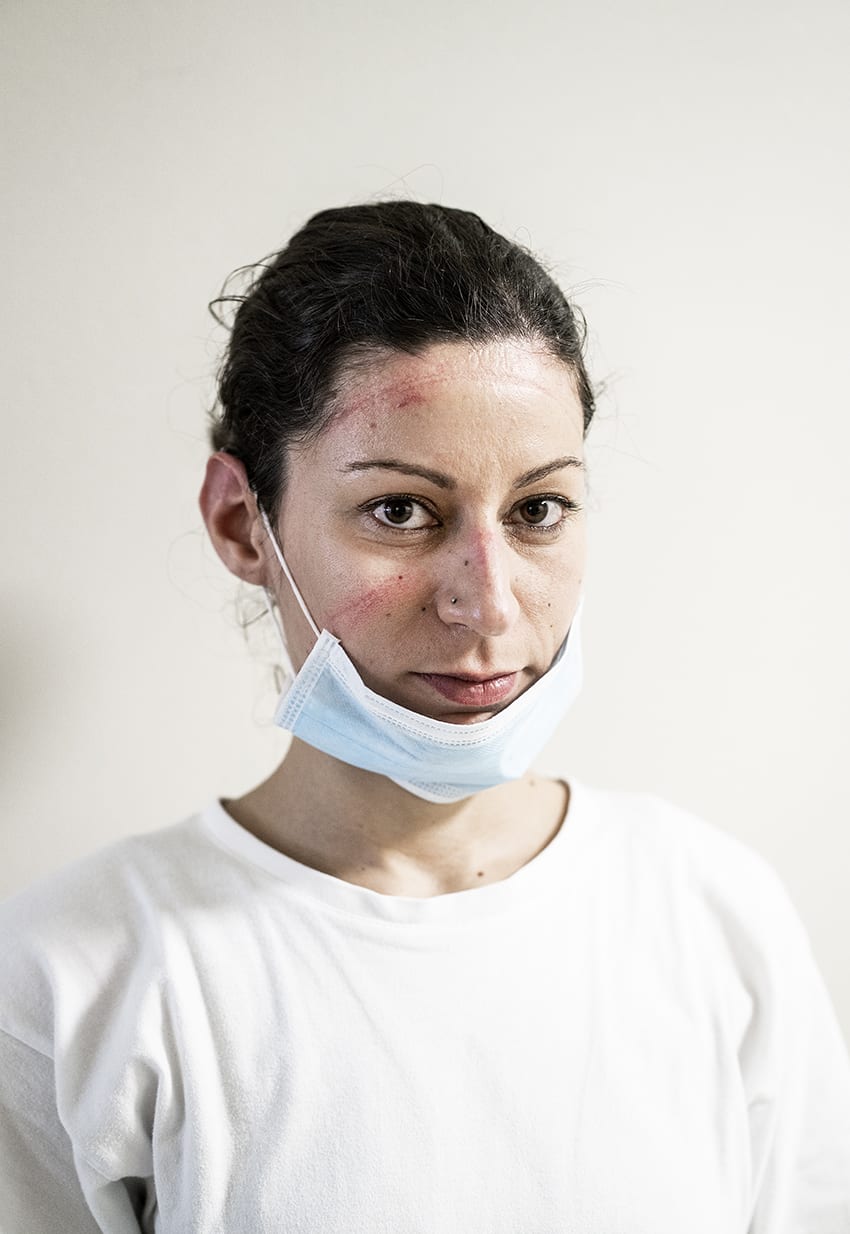
Their eyes stare into the camera — overwhelmed and lost — skin pallid and carved by the deep outlines of masks. These are intimate moments, moments of absolute human struggle, and they will transcend this time, acting as records of what was endured by those on the frontlines. However, this approach was not Giuliani’s first. When COVID-19 arrived in Italy, the photographer struggled with how to depict it. Aesthetically, Pesaro was not comparable to the grand emptiness of major cities, such as Venice or Milan, and desolate streets populated with masked individuals had fast become the defining image of the crisis. “The enemy was in another place,” he reflects, “it was, and is, completely invisible.”
Giuliani decided that the focus was to be found inside — within locked-down houses and beyond the walls of heaving hospitals, and it is to San Salvatore that he went, initially, photographing medics in hazmat suits and masks. However, it was the traces left by the equipment that interested him most: “If you cannot see what object generates the sign, then the sign says more about the invisibility of the threat,” he says.
Giuliani knew many of the individuals he photographed. However, as they emerged from the unit at the end of their shifts they were often unrecognisable: “I could not recognise their eyes”, he says. Giuliani describes one couple, both nurses working in the ICU, with six children and no help. Then he describes the experience of another friend, Ellen, also a nurse and employed in the unit, who spoke to the wife of an acutely ill patient on the phone and relayed her final words of love to him.
The series of portraits, now part of a Unilever-Dove campaign highlighting those on the frontline, should not be sensationalistic, rather it should provide a point of reflection. Meanwhile, the number of cases in Italy is gradually decreasing — “and you can feel it”, says the photographer, who continues to visit the hospital, which is slowly returning to some normality. Giuliani hopes that the work will inform other countries worldwide about the realities of COVID-19 and what can be done to fight it. “However, what will come after will be more important than now,” he says, “it is an opportunity for better things — let us take it”.

